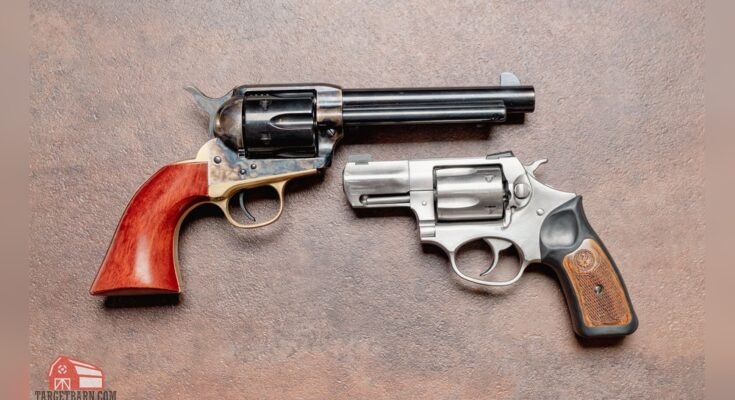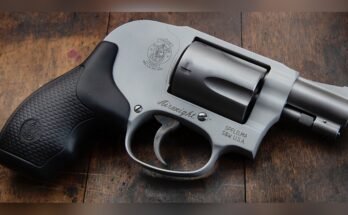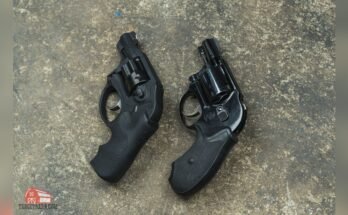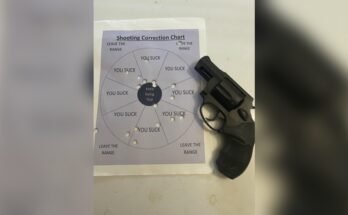Are you curious about whether double-action revolvers are easier to use than other guns? If you’ve ever wondered how these firearms work or if they might be a better fit for you, you’re in the right place.
Understanding the basics of double-action revolvers can make a big difference in your shooting experience, safety, and confidence. Keep reading to discover how these guns operate and why they might be simpler for you to handle than you think.
Double-action Revolver Basics
Double-action revolvers have a unique design that affects how they work and how easy they are to use. Understanding the basics helps you see their advantages and limits. These revolvers can fire with a simple pull of the trigger, which combines two actions into one.
Knowing how these actions work gives insight into the speed and safety of the firearm. This section explains the double-action mechanism and compares it to the single-action style.
How Double-action Mechanism Works
A double-action revolver lets the shooter pull the trigger to do two things at once. First, it pulls the hammer back. Second, it releases the hammer to hit the firing pin. This means you do not need to cock the hammer by hand.
This design allows faster shooting. The trigger pull is longer and heavier because it does more work. Some shooters like this for self-defense because it reduces mistakes.
Single-action Vs Double-action
Single-action revolvers need the hammer pulled back before each shot. The trigger only releases the hammer. This results in a lighter and shorter trigger pull.
Double-action revolvers combine cocking and firing in one trigger pull. This makes shooting faster but needs more finger strength. Single-action guns may be easier for precise shooting. Double-action works well for quick response.
Ease Of Use Factors
Ease of use is key when choosing a double-action revolver. Several factors affect how simple it feels to handle and shoot. These include the trigger pull, reloading process, and overall comfort. Understanding these helps decide if a double-action revolver fits your needs.
Trigger Pull And Control
Double-action revolvers have a longer trigger pull than single-action ones. This means you must press harder to fire. The heavier pull helps prevent accidental shots. Some find it harder to keep control during firing. Practice can improve accuracy and make the trigger feel smoother.
Reloading And Maintenance
Reloading a double-action revolver takes more time than semi-automatic guns. You load each chamber individually or use speed loaders. Cleaning is simple due to fewer moving parts. Proper maintenance keeps the revolver reliable and safe to use. Learning the reloading steps makes the process faster.
Ergonomics And Handling
Double-action revolvers usually have a solid, balanced feel. Their shape fits well in most hands. The grip design helps reduce recoil and improve aim. They are often heavier, which adds stability. Good handling makes shooting more comfortable and boosts confidence.
Practical Benefits Of Double-action
Double-action revolvers offer practical benefits that many users appreciate. These benefits make handling and operating easier for both beginners and experienced shooters. The design supports quick response, safety, and adaptability in many situations.
Speed And Readiness
Double-action revolvers allow firing with just one pull of the trigger. This means no need to cock the hammer manually before shooting. The process is faster, which helps in urgent moments. Users can react quickly without extra steps. This quick readiness can be crucial in self-defense or other time-sensitive scenarios.
Safety Features
The design of double-action revolvers adds safety by requiring a longer, heavier trigger pull. This reduces the chance of accidental firing. It also helps users avoid unintentional shots during handling. Many models include a hammer block or transfer bar to prevent firing unless the trigger is fully pulled. These features protect both the user and those nearby.
Versatility In Different Situations
Double-action revolvers work well in various conditions. They perform reliably in cold, wet, or dirty environments. The simple mechanism is less likely to jam compared to semi-automatic pistols. This makes them great for outdoor use or emergency situations. Users can depend on the revolver’s consistent function regardless of the setting.
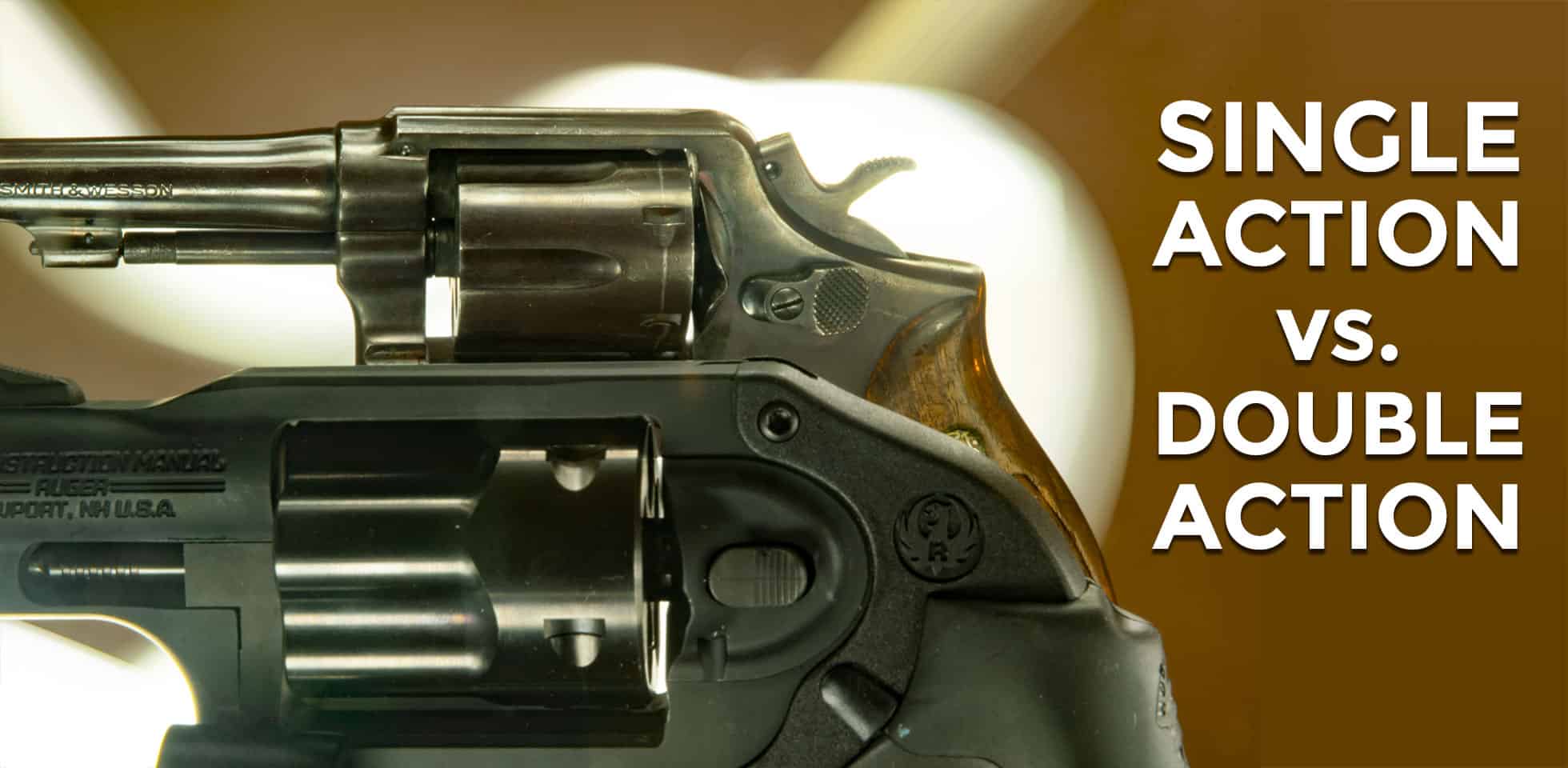
Challenges With Double-action Revolvers
Double-action revolvers have unique challenges that can affect their use. These challenges influence comfort, control, and shooting skills. Understanding them helps users decide if this type fits their needs.
Many find the double-action mechanism different from other firearms. This difference can make shooting less smooth at first. Let’s explore key challenges faced by users.
Trigger Pull Weight
The trigger pull on double-action revolvers is usually heavier. Pulling the trigger both cocks and releases the hammer. This requires more finger strength and control.
A heavy trigger pull can tire the shooter quickly. It can also cause the gun to move off target. This makes steady shooting harder, especially for beginners.
Accuracy Considerations
Accuracy can suffer with double-action revolvers. The long and heavy trigger pull often leads to shaking or jerking the gun. These small movements reduce shot precision.
Experienced shooters might handle this better. But new users often struggle to hit targets consistently. Practicing slow, controlled shots helps improve accuracy over time.
Learning Curve For Beginners
Beginners may find double-action revolvers tough to learn. The heavier trigger and different handling need practice. It takes time to develop smooth shooting skills.
New shooters should spend extra time on grip and trigger control. Small mistakes can cause poor shooting results. Patience and practice are key to gaining confidence.
User Experiences And Preferences
User experiences shape how people view double-action revolvers. Preferences vary based on training, use, and comfort. Some find these guns easier due to their design. Others prefer different types for specific reasons. Exploring various groups helps understand these views.
Law Enforcement Use
Many police officers have used double-action revolvers. They like the safety of the heavier trigger pull. It helps avoid accidental shots. The ability to fire quickly without cocking the hammer is a plus. Some agencies still train with these revolvers for backup weapons. Ease of use under stress is a key factor for them.
Civilian Perspectives
Civilians often choose double-action revolvers for self-defense. They appreciate the simple operation and reliability. New shooters find the double-action mode less intimidating. Some feel confident with fewer steps to fire. Others prefer single-action for lighter triggers and better accuracy. Personal comfort and confidence guide their choice.
Competitive Shooting Insights
Competitive shooters value speed and precision. Many favor single-action for a light, crisp trigger pull. Yet, some use double-action revolvers for specific events. They train to manage the heavier trigger with practice. Double-action provides versatility in quick shooting. Shooters adapt their style to the revolver’s strengths.
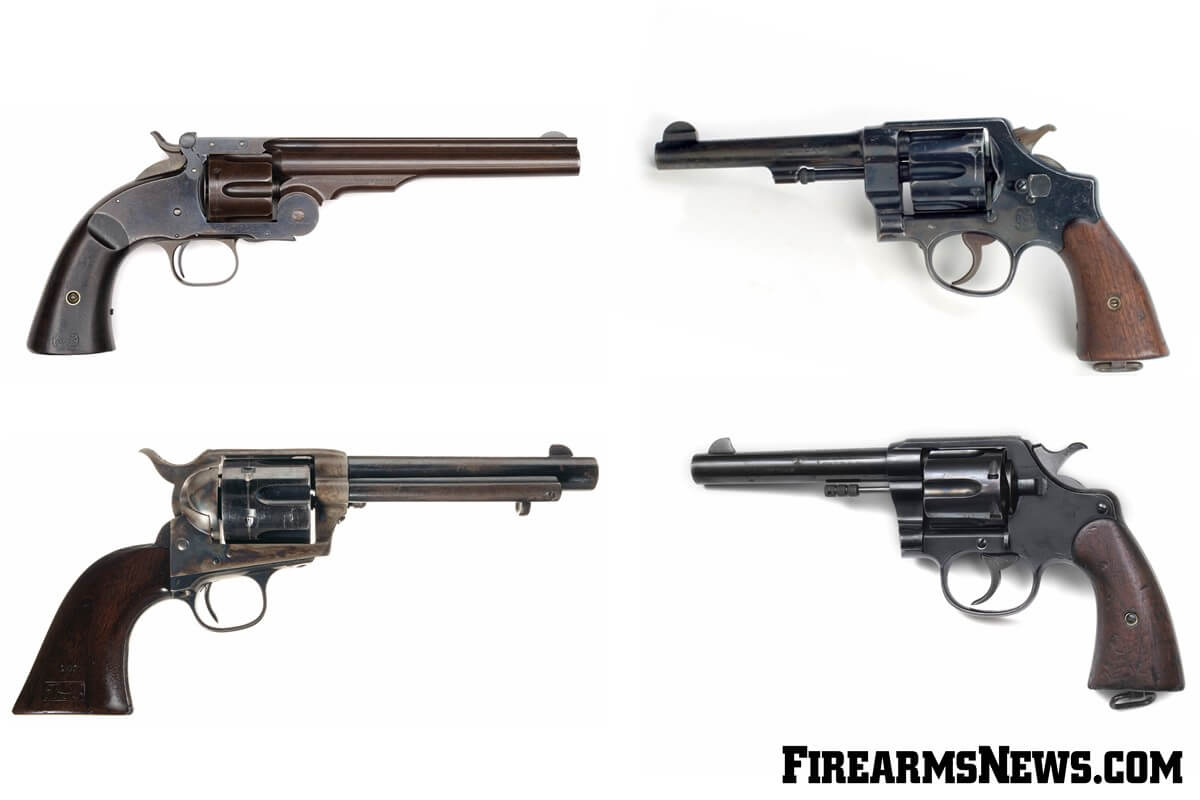
Comparing Alternatives
Choosing the right firearm depends on many factors. Ease of use is important for beginners and experts alike. Comparing double-action revolvers with other options helps understand their strengths and weaknesses. Each type has unique features that affect handling, speed, and safety.
Semi-automatic Pistols
Semi-automatic pistols use the energy from firing to load the next round. They have a higher ammo capacity than revolvers. These pistols usually require less trigger pressure for each shot. This can make shooting faster and easier. Reloading is quicker with magazines instead of individual rounds. Some models have safety mechanisms that add extra protection.
Single-action Revolvers
Single-action revolvers need the hammer to be cocked manually before each shot. This requires more steps but offers a lighter trigger pull. The lighter trigger can improve accuracy for some shooters. These revolvers are often simpler in design and easier to maintain. Their use is common in sport shooting and historical reenactments.
Other Firearm Types
There are many other firearm types like lever-action rifles and pump-action shotguns. Each type serves different needs and uses. Lever-action rifles offer quick follow-up shots and are often used for hunting. Pump-action shotguns provide reliability and versatility in various situations. These firearms differ greatly from revolvers in operation and handling.

Frequently Asked Questions
What Is A Double-action Revolver?
A double-action revolver fires by pulling the trigger, which both cocks and releases the hammer. This allows faster shooting without manually cocking.
Are Double-action Revolvers Better For Beginners?
Yes, double-action revolvers offer simpler operation. They reduce the need for manual hammer cocking, making them easier for new shooters to use safely.
How Does Trigger Pull Affect Ease Of Use?
Double-action triggers require more force, which can affect accuracy but improve control. This balance makes the revolver easier for some users to handle.
Can Double-action Revolvers Be Used For Self-defense?
Absolutely. Their quick firing capability and reliability make double-action revolvers popular for personal defense and law enforcement use.
Conclusion
Double-action revolvers offer simple and quick shooting. They do not need to cock the hammer first. This makes them easier for many to use. Beginners often feel more confident with these guns. Still, practice is key to improve accuracy. Understanding how your revolver works matters a lot.
Choose the type that fits your needs best. Safety always comes first when handling any firearm. Double-action revolvers can be a good choice for many shooters.
